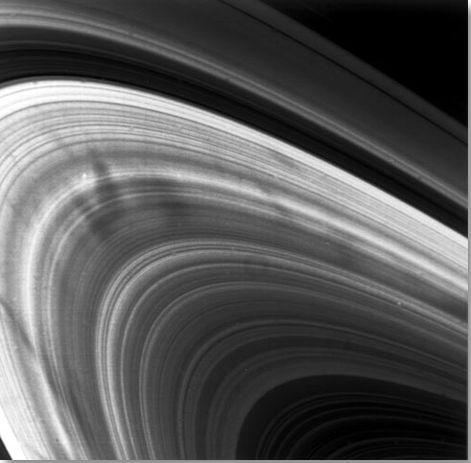😥Poor Scrooge
😥Poor Scrooge
Once again this episode is making me even more sad when i do these things.

Scrooge is still fuming after the argument on the plane with everyone.
Mrs. Beakley and Webby are leaving the manor with packed bags and uncertainty if they’ll come back. With Scrooge barely batting an eye and dismissing them quickly.

Webby is clearly still hurt after what Scrooge had said to her

“Well you’ve successfully pushed your family and everyone who cared about you away, Again. I hope your happy”. Dang, You can just hear the venom in her voice in that comment.

This freaking shot of duckworth leaving as well actually made me gasp in shock. I kinda forgot he was there but knowing that he was leaving to was heartbreaking.
Then we see Scrooge grab a key and go into a room which seems to be locked up for a long time due to the dust and the chair being covering up.


The realization slowly coming onto his face as he just sits there, contemplating the events. It quickly goes to mad then regret. (God this show is torturing me.)


Then we see that he did do what everyone thought he didn’t. He built more spaceships, he sent astronauts into space to look for her, with them never finding her ship or even losing the rescue ships in the process.
It was to the point of spending almost all of his money from his own bin to fund it and keep it going. But it got too expensive to the point where he was forced to shut it down completely, with Scrooge feeling like he failed to protect Della and try to bring her home and became truly alone in the process.


“I AM”
That line broke the dam whatever I was trying to hold in and had me silently sobbing as the credits rolled.
The way that line was acted, the gruff exterior of his stubbornness and his mind being made up and yet his voice sounds close to breaking as tears roll down his cheeks.
David Tennant…..it’s now the 2nd time this man has made me cry when I watch a show with him in it.
This Finale is gonna be amazing, but we all know we’re gonna be on the floor once it’s over.
More Posts from Aliensteel23 and Others
who’s still on tumblr?
reblog if you plan on remaining active.
just wanna see if the number’s still huge! ☆
New things in space
Solar System: Things to Know This Week
Our Dawn mission to the asteroid belt is no ordinary deep space expedition.
Instead of traditional chemical rockets, the spacecraft uses sophisticated ion engines for propulsion. This enabled Dawn to become the first mission to orbit not one, but two different worlds — first the giant asteroid Vesta and now the dwarf planet Ceres. Vesta and Ceres formed early in the solar system’s history, and by studying them, the mission is helping scientists go back in time to the dawn of the planets. To mark a decade since Dawn was launched on Sept. 27, 2007, here are 10 things to know about this trailblazing mission.
1. Ion Engines: Not Just for Sci-Fi Anymore

Most rocket engines use chemical reactions for propulsion, which tend to be powerful but short-lived. Dawn’s futuristic, hyper-efficient ion propulsion system works by using electricity to accelerate ions (charged particles) from xenon fuel to a speed seven to 10 times that of chemical engines. Ion engines accelerate the spacecraft slowly, but they’re very thrifty with fuel, using just milligrams of xenon per second (about 10 ounces over 24 hours) at maximum thrust. Without its ion engines, Dawn could not have carried enough fuel to go into orbit around two different solar system bodies. Try your hand at an interactive ion engine simulation.
2. Time Capsules

Scientists have long wanted to study Vesta and Ceres up close. Vesta is a large, complex and intriguing asteroid. Ceres is the largest object in the entire asteroid belt, and was once considered a planet in its own right after it was discovered in 1801. Vesta and Ceres have significant differences, but both are thought to have formed very early in the history of the solar system, harboring clues about how planets are constructed. Learn more about Ceres and Vesta—including why we have pieces of Vesta here on Earth.
3. Portrait of a Dwarf Planet

This view of Ceres built from Dawn photos is centered on Occator Crater, home of the famous “bright spots.” The image resolution is about 460 feet (140 meters) per pixel.
Take a closer look.
4. What’s in a Name?
Craters on Ceres are named for agricultural deities from all over the world, and other features carry the names of agricultural festivals. Ceres itself was named after the Roman goddess of corn and harvests (that’s also where the word “cereal” comes from). The International Astronomical Union recently approved 25 new Ceres feature names tied to the theme of agricultural deities. Jumi, for example, is the Latvian god of fertility of the field. Study the full-size map.
5. Landslides or Ice Slides?

Thanks to Dawn, evidence is mounting that Ceres hides a significant amount of water ice. A recent study adds to this picture, showing how ice may have shaped the variety of landslides seen on Ceres today.
6. The Lonely Mountain

Ahuna Mons, a 3-mile-high (5-kilometer-high) mountain, puzzled Ceres explorers when they first found it. It rises all alone above the surrounding plains. Now scientists think it is likely a cryovolcano — one that erupts a liquid made of volatiles such as water, instead of rock. “This is the only known example of a cryovolcano that potentially formed from a salty mud mix, and that formed in the geologically recent past,” one researcher said. Learn more.
7. Shining a Light on the Bright Spots

The brightest area on Ceres, located in the mysterious Occator Crater, has the highest concentration of carbonate minerals ever seen outside Earth, according to studies from Dawn scientists. Occator is 57 miles (92 kilometers) wide, with a central pit about 6 miles (10 kilometers) wide. The dominant mineral of this bright area is sodium carbonate, a kind of salt found on Earth in hydrothermal environments. This material appears to have come from inside Ceres, and this upwelling suggests that temperatures inside Ceres are warmer than previously believed. Even more intriguingly, the results suggest that liquid water may have existed beneath the surface of Ceres in recent geological time. The salts could be remnants of an ocean, or localized bodies of water, that reached the surface and then froze millions of years ago. See more details.
8. Captain’s Log
Dawn’s chief engineer and mission director, Marc Rayman, provides regular dispatches about Dawn’s work in the asteroid belt. Catch the latest updates here.
9. Eyes on Dawn
Another cool way to retrace Dawn’s decade-long flight is to download NASA’s free Eyes on the Solar System app, which uses real data to let you go to any point in the solar system, or ride along with any spacecraft, at any point in time—all in 3-D.
10. No Stamp Required

Send a postcard from one of these three sets of images that tell the story of dwarf planet Ceres, protoplanet Vesta, and the Dawn mission overall.
Make sure to follow us on Tumblr for your regular dose of space: http://nasa.tumblr.com.
Love it! More like the original version

NGL, Reboot Upgrade looks sick with normal colors.
A tribute to every brave men and women who rise their lives for our free country.










RIP to all the Men and Women who gave their lives for us to be able to be “Free”
Space 2017
Solar System: Things to Know This Week
See our home planet from Mars, learn about our latest Discovery missions, see stunning imagery from the Cassini mission and more!

1. Our Home
The powerful HiRISE camera on the Mars Reconnaissance Orbiter took this incredible image of our home and moon. The image combines two separate exposures taken on Nov. 20, 2016.
+ See more

2. Our Latest Missions of Discovery
We’ve selected two new missions to explore the early solar system. Lucy, a robotic spacecraft scheduled to launch in October 2021, is slated to arrive at its first destination, a main belt asteroid, in 2025. From 2027 to 2033, Lucy will explore six Jupiter Trojan asteroids. These asteroids are trapped by Jupiter’s gravity in two swarms that share the planet’s orbit, one leading and one trailing Jupiter in its 12-year circuit around the sun.
+Learn more
Psyche, targeted to launch in October 2023, will explore one of the most intriguing targets in the main asteroid belt–a giant metal asteroid, known as 16 Psyche. The asteroid is about 130 miles (210 kilometers) in diameter and thought to be comprised mostly of iron and nickel, similar to Earth’s core.
+ Details

3. Image From Cassini
Cassini took so many jaw-dropping photos last year, how could anyone choose just 10? Well, the Cassini team didn’t. Here are 17 amazing photos from Saturn and its moons last year.

4. The Colors of Mars
Impact craters have exposed the subsurface materials on the steep slopes of Mars. However, these slopes often experience rockfalls and debris avalanches that keep the surface clean of dust, revealing a variety of hues, like in this enhanced-color image from our Mars Reconnaissance Orbiter, representing different rock types.
+ Learn more

5. More From New Horizons
Even though our New Horizons mission flew by Pluto in 2015, the scientific discoveries keep coming. Using a model similar to what meteorologists use to forecast weather and a computer simulation of the physics of evaporating ices, scientists have found evidence of snow and ice features that, until now, had only been seen on Earth.
Discover the full list of 10 things to know about our solar system this week HERE.
Make sure to follow us on Tumblr for your regular dose of space: http://nasa.tumblr.com
Now those are 5 great heroes.
![Voltron: Legendary Defender Season 2 Now Streaming [x]](https://64.media.tumblr.com/39070de2b5836ba0f4a3295933bd60b8/tumblr_ok39yrTfcw1u3bhkao1_500.gif)
![Voltron: Legendary Defender Season 2 Now Streaming [x]](https://64.media.tumblr.com/05ee5b724c2559b61592a1e980ea3e58/tumblr_ok39yrTfcw1u3bhkao2_500.gif)
![Voltron: Legendary Defender Season 2 Now Streaming [x]](https://64.media.tumblr.com/f8b5fc0bbb8f59880da3c874c00c543d/tumblr_ok39yrTfcw1u3bhkao3_500.gif)
![Voltron: Legendary Defender Season 2 Now Streaming [x]](https://64.media.tumblr.com/9d5afbb305763028c401efd4d18d020f/tumblr_ok39yrTfcw1u3bhkao4_500.gif)
![Voltron: Legendary Defender Season 2 Now Streaming [x]](https://64.media.tumblr.com/2790f57379e82ac4cdcfc34111e8c869/tumblr_ok39yrTfcw1u3bhkao5_500.gif)
![Voltron: Legendary Defender Season 2 Now Streaming [x]](https://64.media.tumblr.com/5a237dac7ed2253983e28cc819c2f18c/tumblr_ok39yrTfcw1u3bhkao6_500.gif)
Voltron: Legendary Defender Season 2 Now Streaming [x]
The marvels of space
Cassini Spacecraft: Top Discoveries
Our Cassini spacecraft has been exploring Saturn, its stunning rings and its strange and beautiful moons for more than a decade.

Having expended almost every bit of the rocket propellant it carried to Saturn, operators are deliberately plunging Cassini into the planet to ensure Saturn’s moons will remain pristine for future exploration – in particular, the ice-covered, ocean-bearing moon Enceladus, but also Titan, with its intriguing pre-biotic chemistry.
Let’s take a look back at some of Cassini’s top discoveries:
Titan

Under its shroud of haze, Saturn’s planet-sized moon Titan hides dunes, mountains of water ice and rivers and seas of liquid methane. Of the hundreds of moons in our solar system, Titan is the only one with a dense atmosphere and large liquid reservoirs on its surface, making it in some ways more like a terrestrial planet.

Both Earth and Titan have nitrogen-dominated atmospheres – over 95% nitrogen in Titan’s case. However, unlike Earth, Titan has very little oxygen; the rest of the atmosphere is mostly methane and traced amounts of other gases, including ethane.

There are three large seas, all located close to the moon’s north pole, surrounded by numerous smaller lakes in the northern hemisphere. Just one large lake has been found in the southern hemisphere.
Enceladus

The moon Enceladus conceals a global ocean of salty liquid water beneath its icy surface. Some of that water even shoots out into space, creating an immense plume!

For decades, scientists didn’t know why Enceladus was the brightest world in the solar system, or how it related to Saturn’s E ring. Cassini found that both the fresh coating on its surface, and icy material in the E ring originate from vents connected to a global subsurface saltwater ocean that might host hydrothermal vents.

With its global ocean, unique chemistry and internal heat, Enceladus has become a promising lead in our search for worlds where life could exist.
Iapetus

Saturn’s two-toned moon Iapetus gets its odd coloring from reddish dust in its orbital path that is swept up and lands on the leading face of the moon.

The most unique, and perhaps most remarkable feature discovered on Iapetus in Cassini images is a topographic ridge that coincides almost exactly with the geographic equator. The physical origin of the ridge has yet to be explained…

It is not yet year whether the ridge is a mountain belt that has folded upward, or an extensional crack in the surface through which material from inside Iapetus erupted onto the surface and accumulated locally.
Saturn’s Rings

Saturn’s rings are made of countless particles of ice and dust, which Saturn’s moons push and tug, creating gaps and waves.

Scientists have never before studied the size, temperature, composition and distribution of Saturn’s rings from Saturn obit. Cassini has captured extraordinary ring-moon interactions, observed the lowest ring-temperature ever recorded at Saturn, discovered that the moon Enceladus is the source for Saturn’s E ring, and viewed the rings at equinox when sunlight strikes the rings edge-on, revealing never-before-seen ring features and details.

Cassini also studied features in Saturn’s rings called “spokes,” which can be longer than the diameter of Earth. Scientists think they’re made of thin icy particles that are lifted by an electrostatic charge and only last a few hours.
Auroras

The powerful magnetic field that permeates Saturn is strange because it lines up with the planet’s poles. But just like Earth’s field, it all creates shimmering auroras.

Auroras on Saturn occur in a process similar to Earth’s northern and southern lights. Particles from the solar wind are channeled by Saturn’s magnetic field toward the planet’s poles, where they interact with electrically charged gas (plasma) in the upper atmosphere and emit light.
Turbulent Atmosphere

Saturn’s turbulent atmosphere churns with immense storms and a striking, six-sided jet stream near its north pole.

Saturn’s north and south poles are also each beautifully (and violently) decorated by a colossal swirling storm. Cassini got an up-close look at the north polar storm and scientists found that the storm’s eye was about 50 times wider than an Earth hurricane’s eye.

Unlike the Earth hurricanes that are driven by warm ocean waters, Saturn’s polar vortexes aren’t actually hurricanes. They’re hurricane-like though, and even contain lightning. Cassini’s instruments have ‘heard’ lightning ever since entering Saturn orbit in 2004, in the form of radio waves. But it wasn’t until 2009 that Cassini’s cameras captured images of Saturnian lighting for the first time.

Cassini scientists assembled a short video of it, the first video of lightning discharging on a planet other than Earth.

Cassini’s adventure will end soon because it’s almost out of fuel. So to avoid possibly ever contaminating moons like Enceladus or Titan, on Sept. 15 it will intentionally dive into Saturn’s atmosphere.

The spacecraft is expected to lose radio contact with Earth within about one to two minutes after beginning its decent into Saturn’s upper atmosphere. But on the way down, before contact is lost, eight of Cassini’s 12 science instruments will be operating! More details on the spacecraft’s final decent can be found HERE.
Make sure to follow us on Tumblr for your regular dose of space: http://nasa.tumblr.com
This is the beauty of space
Holiday Lights from the Universe
Although there are no seasons in space, some cosmic vistas invoke thoughts of a frosty winter landscape. Here are a few stellar images of holiday wonderlands from across the galaxy…

Located in our galaxy about 5,500 light years from Earth, this region is actually a “cluster of clusters,” containing at least three clusters of young stars, including many hot, massive, luminous stars.

The outstretched “wings” of this nebula looks like a soaring, celestial snow angel. Twin lobes of super-hot gas, glowing blue in this image, stretch outward from the central star. This hot gas creates the “wings” of our angel. A ring of dust and gas orbiting the star acts like a belt, clinching the expanding nebula into an “hourglass” shape.

At this time of year, holiday parties often include festive lights. When galaxies get together, they also may be surrounded by a spectacular light show. This pair of spiral galaxies has been caught in a grazing encounter. This region has hosted three supernova explosions in the past 15 years and has produced one of the most bountiful collections of super-bright X-ray lights known.

What do the following things have in common: a cone, the fur of a fox and a Christmas tree? Answer: they all occur in the constellation of the unicorn (Monoceros). Pictured as a star forming region, the complex jumble of cosmic gas and dust is about 2,700 light-years away.

Resembling festive lights on a holiday wreath, this Hubble Space Telescope image of a nearby spiral galaxy is an iconic reminder of the impending season. Bright knots of glowing gas light up the spiral arms, indicating a rich environment of star formation.

The Hubble Space Telescope captured two festive-looking nebulas, situated so as to appear as one. Intense radiation from the brilliant central stars is heating hydrogen in each of the nebulas, causing them to glow red…like a holiday light.
Make sure to follow us on Tumblr for your regular dose of space: http://nasa.tumblr.com
-
 cryingunderthewaterfall liked this · 3 years ago
cryingunderthewaterfall liked this · 3 years ago -
 spliffany-deactiv reblogged this · 3 years ago
spliffany-deactiv reblogged this · 3 years ago -
 choconymph liked this · 3 years ago
choconymph liked this · 3 years ago -
 ladybugsonfire reblogged this · 3 years ago
ladybugsonfire reblogged this · 3 years ago -
 slimestratusphere liked this · 3 years ago
slimestratusphere liked this · 3 years ago -
 delightfulsuityouth liked this · 3 years ago
delightfulsuityouth liked this · 3 years ago -
 nereisi liked this · 3 years ago
nereisi liked this · 3 years ago -
 pafe-yo liked this · 3 years ago
pafe-yo liked this · 3 years ago -
 foreverapprentice liked this · 3 years ago
foreverapprentice liked this · 3 years ago -
 1webby liked this · 3 years ago
1webby liked this · 3 years ago -
 saras-socks liked this · 4 years ago
saras-socks liked this · 4 years ago -
 marikid2 liked this · 4 years ago
marikid2 liked this · 4 years ago -
 waywardmiraclesstuff liked this · 4 years ago
waywardmiraclesstuff liked this · 4 years ago -
 phoenixjessicaross64 liked this · 4 years ago
phoenixjessicaross64 liked this · 4 years ago -
 chaostheorist48 liked this · 4 years ago
chaostheorist48 liked this · 4 years ago -
 grandpizzaeater liked this · 4 years ago
grandpizzaeater liked this · 4 years ago -
 tay-8910 reblogged this · 4 years ago
tay-8910 reblogged this · 4 years ago -
 idznakrat liked this · 4 years ago
idznakrat liked this · 4 years ago -
 drowbarkeep liked this · 4 years ago
drowbarkeep liked this · 4 years ago -
 bethefruit liked this · 4 years ago
bethefruit liked this · 4 years ago -
 mighty-ant liked this · 4 years ago
mighty-ant liked this · 4 years ago -
 unknownsoul07 liked this · 4 years ago
unknownsoul07 liked this · 4 years ago -
 mysticperryfletcher liked this · 4 years ago
mysticperryfletcher liked this · 4 years ago -
 caligxnosity liked this · 4 years ago
caligxnosity liked this · 4 years ago -
 peyton1234blog liked this · 4 years ago
peyton1234blog liked this · 4 years ago -
 jessconsumesmedia liked this · 4 years ago
jessconsumesmedia liked this · 4 years ago -
 lavendercakefrosting liked this · 4 years ago
lavendercakefrosting liked this · 4 years ago -
 dreamstar37 liked this · 4 years ago
dreamstar37 liked this · 4 years ago -
 dreemurr-paige liked this · 4 years ago
dreemurr-paige liked this · 4 years ago -
 jelly-belly-fish liked this · 4 years ago
jelly-belly-fish liked this · 4 years ago -
 jeokinz liked this · 4 years ago
jeokinz liked this · 4 years ago -
 juniaships liked this · 4 years ago
juniaships liked this · 4 years ago -
 chaoticsalami liked this · 4 years ago
chaoticsalami liked this · 4 years ago -
 echo-spider-20 liked this · 4 years ago
echo-spider-20 liked this · 4 years ago -
 niyana-the-ambiguous-mobian reblogged this · 4 years ago
niyana-the-ambiguous-mobian reblogged this · 4 years ago -
 punster-2319 liked this · 4 years ago
punster-2319 liked this · 4 years ago -
 isnotanamekleps liked this · 4 years ago
isnotanamekleps liked this · 4 years ago -
 alonei10 liked this · 4 years ago
alonei10 liked this · 4 years ago -
 tremendoustreecherryblossom liked this · 4 years ago
tremendoustreecherryblossom liked this · 4 years ago -
 hrmarie00 liked this · 4 years ago
hrmarie00 liked this · 4 years ago -
 starpuppy59 liked this · 4 years ago
starpuppy59 liked this · 4 years ago -
 hunter-the-sad-skeleton liked this · 4 years ago
hunter-the-sad-skeleton liked this · 4 years ago -
 ladybugsonfire liked this · 4 years ago
ladybugsonfire liked this · 4 years ago -
 ballyh liked this · 4 years ago
ballyh liked this · 4 years ago -
 himehnamessteve liked this · 4 years ago
himehnamessteve liked this · 4 years ago -
 rainre liked this · 4 years ago
rainre liked this · 4 years ago
